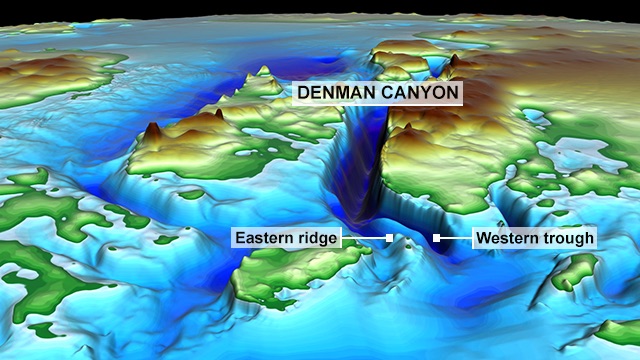SOURCE: BBC
DATE: March 23, 2020
SNIP: East Antarctic’s Denman Canyon is the deepest land gorge on Earth, reaching 3,500m below sea-level.
It’s also filled top to bottom with ice, which US space agency (Nasa) scientists reveal in a new report has a significant vulnerability to melting.
Retreating and thinning sections of the glacier suggest it is being eroded by encroaching warm ocean water.
Denman is one to watch for the future. If its ice were hollowed out, it would raise the global sea surface by 1.5m.
Most people recognise the shores around the Dead Sea in the Middle East to have the lowest visible land surface elevation on Earth, at some 430m below sea level. But the base of the gorge occupied by Denman Glacier on the edge of the East Antarctic Ice Sheet (EAIS) actually reaches eight times as deep.
Dr Brancato and colleagues used satellite radar data from 1996 to 2018 to show there’s been a marked retreat in the glacier’s grounding line. This is the point where the ice stream lifts up and floats as it flows off the land and enters the ocean.
The line has reversed 5-6km in 22 years.
What’s interesting about this reversal, however, is that it’s asymmetric; it’s occurring pretty much all on the western side of the glacier.
The reason, the scientists can now determine, is a buried ridge under the eastern flank which is pinning and protecting that side of the glacier. In contrast, the western flank features a narrow but sizeable trough that would allow warm ocean water to erode the grounding line and push it backwards.
This potentially is an Achilles heel. The further inland the glacier reaches, the deeper its bed – which is a geometry that has been demonstrated to favour more and more melting. If a lot of warm ocean water can find its way to the front of Denman, the opportunity is there to melt out its ice in a significant way.

